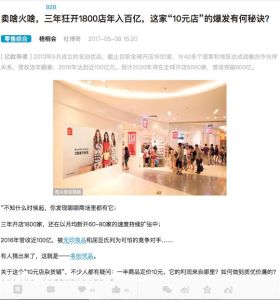
What’s the Secret to the Explosion of the Miniso “10-Yuan Store”?
1,800 Stores in 3 Years; Every Product a Bestseller and About to Hit 10 Billion Yuan in Revenue
Read or listen offline
Amazon KindleRecommendation
Everything about Miniso seems Japanese, including its name, design and branding. But Miniso is a Chinese business operating out of Guangzhou. No doubt the Japanese-style branding has helped Miniso create an image of high quality and win the trust of consumers. But of course, that’s not the sole reason for the company’s success. In this article, business analyst Du Boqi discusses how Miniso’s unique business model and market positioning led to 1,800 stores and ¥10 billion [$1.5 billion] in revenue. getAbstract recommends this article to anyone working in logistics or offline retail, as well as to designers, business managers and shopaholics.
Summary
About the Author
Du Boqi a business and economics researcher and analyst. He is also a columnist for IYiou, a new-tech media outlet focused on offline-to-online (O2O) businesses, and has written several books, including one on Miniso.


















Comment on this summary